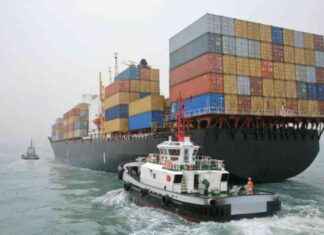The development boom that is sprouting a neighborhood around Denver’s Union Station project has come fast, spiking property and sales tax proceeds to levels not expected until 2022, city officials say.
Last week, the city and the Regional Transportation District took advantage of that revenue – which came in at triple the original projections last year – by refinancing $300 million in federal loans. Those provided the bulk of the money for the marquee project of Denver’s transit expansion.
The upshot: both governments will save money by paying lower interest rates, and Denver expects to pay off its share in eight years. RTD projects it will save $6 million a year through 2040, or $134 million.
That money potentially could help fill gaps in underfunded rail lines in RTD’s $5.3 billion-and-counting FasTracks program. “It’s a big deal,” RTD spokesman Nate Currey said.
The restructuring of the project loans less than three years after Union Station’s reopening is a bright spot amid ongoing technical crossing issues with RTD’s new commuter rail lines and the long-resented shelving of its northwest rail line to Boulder and Longmont.
“With 100,000 commuters passing through it every day and the incredible economic and residential growth that has occurred around it, Denver Union Station has become one of our city’s greatest success stories,” Mayor Michael Hancock said in a statement. “As the area continues to outperform growth projections, we are taking steps to ensure that we are saving taxpayer money by aggressively paying off our debt.”
Here is a look at how Union Station is performing financially:
Union Station has become the hub for Denver’s new and future commuter rail lines in a nearly $500 million project that built new train platforms and a new light rail station, linked by an underground bus concourse that spans two blocks.
A $50 million renovation of the historic Union Station terminal, now owned by RTD, brought several bars, restaurants and concessionaires, along with the Crawford Hotel, when it reopened in spring 2014.
The structure has become the centerpiece of a new dense neighborhood in an area where rail yards once provided a bleak backdrop. Block after block has attracted $1 billion in private development – with each now covered or soon to be filled with mid-rise apartments, office buildings and hotels.
Two major federal loans approved in 2010 provided $300 million, with the rest coming from federal grants, an RTD contribution, state and local money and land sales. To repay them, RTD and the city set out to use RTD’s regional sales tax and tax-increment financing, which captures future gains in tax proceeds due to improved values in an area to finance current improvements.
At the time, Denver City Council faced some public consternation about the Union Station project’s prospects when it was asked to approve a measure putting up general-fund city dollars as a backstop for a portion of the loans – in case tax receipts failed to cover the payments.
So far, those concerns have become moot. The city’s finance department provided figures showing that project analyst CBRE projected tax revenue in the area in 2016 would be $3.9 million, including $635,657 from sales tax and $3.2 million from city, Denver Public Schools and special Union Station Metropolitan District property taxes.
Last year’s proceeds from those two types of taxes outpaced projections by 336 percent, at nearly $13 million total, with $11.7 million from property taxes and $1.3 million from sales taxes.
With recent approval from the City Council and RTD’s board of directors, the two governments opted to refinance the federal loans. That meant paying off a $311 million balance, which included interest that had accumulated during the construction years.
The refinancing resulted in $291 million in new borrowing: Denver took out a $197 million city loan, and RTD issued $94.4 million in bonds.
Denver’s terms call for 12 years of repayment and a 3.39 percent interest rate. But Courtney Law, the spokeswoman for the Department of Finance, says the faster-than-expected development near Union Station has the city planning to pay off that loan in eight years instead. It estimates it will save $10 million.
The city then projects that $31 million in annual tax increment – the portion diverted to pay for the loan – will flow into city, school district and metro district coffers instead.
For the cash-strapped transit agency, the refinancing is resulting not in quicker repayment but in cheaper bills, with a better interest rate at 3.6 percent. That is expected to save nearly $6 million a year on payments starting in 2018, lasting through payoff in 2040.
RTD will tap its regional sales tax proceeds and fare box revenue to make payments, Currey said.
Our editors found this article on this site using Google and regenerated it for our readers.





